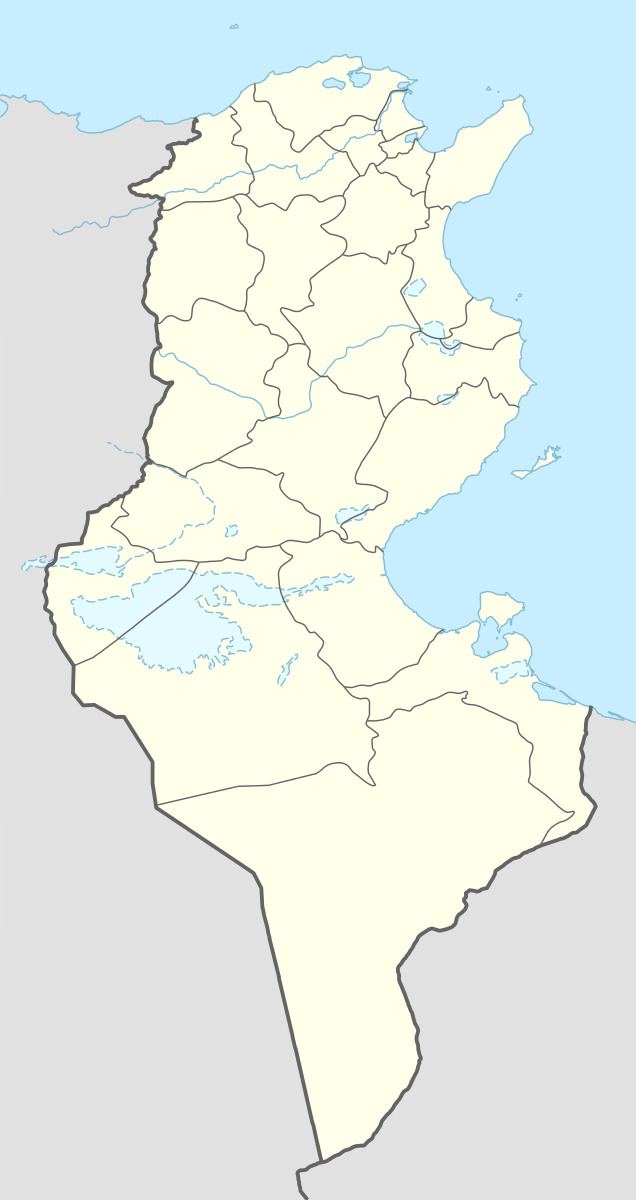Local time Wednesday 7:05 PM | ||
 | ||
Weather 14°C, Wind NE at 21 km/h, 75% Humidity | ||
Leptis Parva (also Leptis Minor, Lesser Leptis or Little Leptis; not to be confused with Leptis Magna in Tripolitania) was an ancient city on the eastern coast of Tunisia by the Gulf of Hammamet in proximity to the modern city of Monastir.
Contents
History
It was founded as a Phoenician colony in the 8th century BCE, around the time Carthage was founded, and was a commercial city. Leptis Parva was a prominent city during the Phoenician period, but became a less important during the Punic rule of the region (c. 600 BCE to 146 BCE). It was incorporated into the Roman Republic with the destruction of Carthage in 146BCE, but gained more autonomy than it had during Punic Era. Julius Caesar used it as his base of operations in 46BCE during his winter campaign against supporters for Pompey led by Titus Labienus. It remained an important city even during the Byzantine Period and was one of the most important cities in North Africa. It suffered the same fate that the other great cities, including Leptis Magna and Carthage, suffered at the hands of invading Arabs, who virtually destroyed the city in the 7th century CE. It was abandoned, never to be settled again.
Ancient History
It is mentioned for the first time in the 4th century BC. BC by the Pseudo-Scylax Trail. The city remains famous for its role in various events of ancient Tunisia:
The ascension of this city is confirmed by its relatively early promotion, compared with many African cities, to the rank of colony by the Roman Emperor Trajan at the beginning of the 2nd century. This city, strongly Romanized, then knew the implantation of a large number of Roman citizens of Italic origin and the mixing of different populations. Another sign of this integration in the Roman Empire is the relatively respectable rate in the statistics of the Leptian soldiers who served in the third legion in the second century. The political and economic importance of this city is also evident from the fact that it is, in the 3rd century, the chief town of a state area known as "regio leptiminesis". Moreover, epigraphy indicates that the imperial cult is practiced there and that Bacchus and Venus were among the deities venerated in this city.
Bishopric
From the 3rd century this city is represented by bishops in different councils of the Roman Catholic Church, including 256 , 411 , 484 and 641.
The diocese was also involved in the great conflict of African Christianity as Catholic and Donatist bishops for the town appear on the lists of participants in these councils.
Among the noted bishops is Laetus described as a "zelous and very learned man" and one of the very few bishops actually killed by the Vandal king Huneric after the council of Carthage in 484.
Middle Ages
At the time of the Byzantine conquest in 533 , the army led by General Bélisaire went through the city heading for Carthage. The political-strategic importance of Leptis Minor is again emphasized by its choice as the seat of the Byzantine military command in Byzacene and its endowment of important fortresses.
Following the Islamic conquest, during the reign of the Aghlabids , the city is endowed in 859 with one of the oldest ribats that have ginned along the Iriquian coast. This ribat is probably built on the ruins of a Byzantine fortress.
